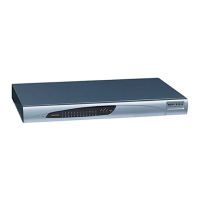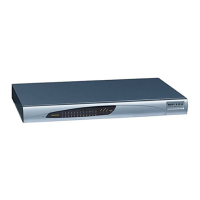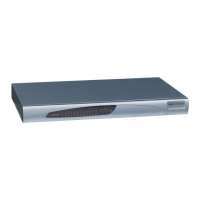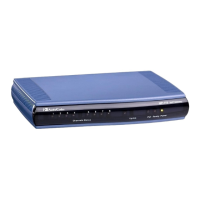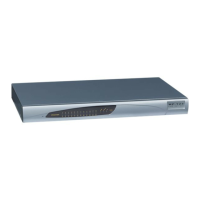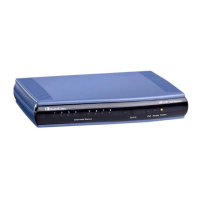SIP User's Manual 274 Document #: LTRT-65412
MP-11x & MP-124
Parameter Description
Web: SIP ReRouting Mode
EMS: SIP Re-Routing Mode
[SIPReroutingMode]
Determines the routing mode after a call redirection (i.e., a 3xx
SIP response is received) or transfer (i.e., a SIP REFER
request is received).
[0] Standard = INVITE messages that are generated as a
result of Transfer or Redirect are sent directly to the URI,
according to the Refer-To header in the REFER message
or Contact header in the 3xx response (default).
[1] Proxy = Sends a new INVITE to the Proxy. Note:
Applicable only if a Proxy server is used and the parameter
AlwaysSendtoProxy is set to 0.
[2] Routing Table = Uses the Routing table to locate the
destination and then sends a new INVITE to this
destination.
Notes:
When this parameter is set to [1] and the INVITE sent to
the Proxy fails, the device re-routes the call according to
the Standard mode [0].
When this parameter is set to [2] and the INVITE fails, the
device re-routes the call according to the Standard mode
[0]. If DNS resolution fails, the device attempts to route the
call to the Proxy. If routing to the Proxy also fails, the
Redirect / Transfer request is rejected.
When this parameter is set to [2], the XferPrefix parameter
can be used to define different routing rules for redirected
calls.
This parameter is disregarded if the parameter
AlwaysSendToProxy is set to 1.
Web/EMS: DNS Query Type
[DNSQueryType]
Enables the use of DNS Naming Authority Pointer (NAPTR)
and Service Record (SRV) queries to resolve Proxy and
Registrar servers and to resolve all domain names that appear
in the Contact and Record-Route headers.
[0] A-Record = A-Record (default)
[1] SRV = SRV
[2] NAPTR = NAPTR
If set to A-Record [0], no NAPTR or SRV queries are
performed.
If set to SRV [1] and the Proxy / Registrar IP address
parameter, Contact / Record-Route headers, or IP address
defined in the Routing tables contains a domain name, an
SRV query is performed. The device uses the first host name
received from the SRV query. The device then performs a
DNS A-record query for the host name to locate an IP
address.
If set to NAPTR [2], an NAPTR query is performed. If it is
successful, an SRV query is sent according to the information
received in the NAPTR response. If the NAPTR query fails, an
SRV query is performed according to the configured transport
type.
If the Proxy / Registrar IP address parameter, the domain
name in the Contact / Record-Route headers, or the IP
